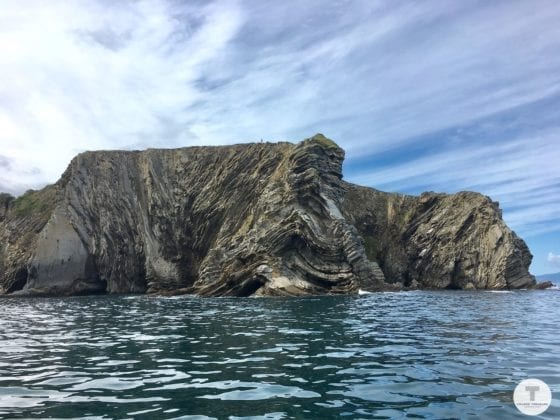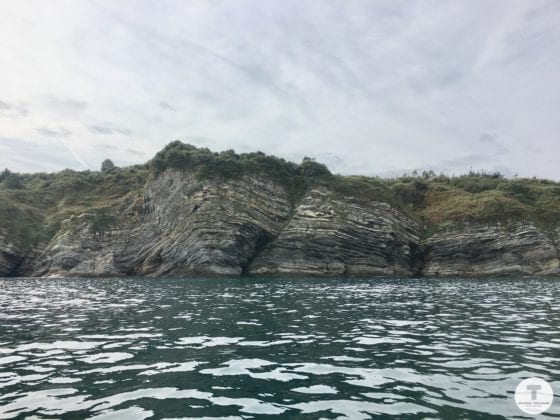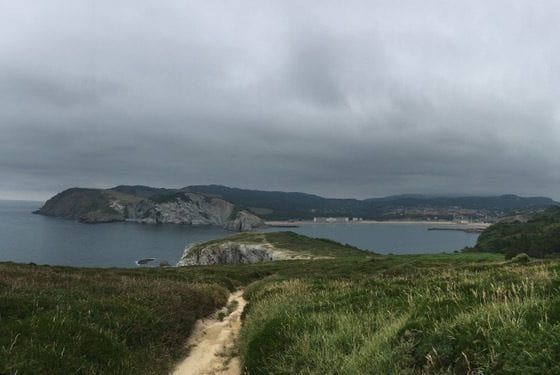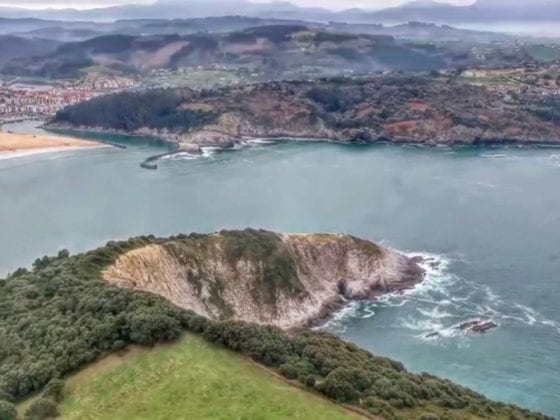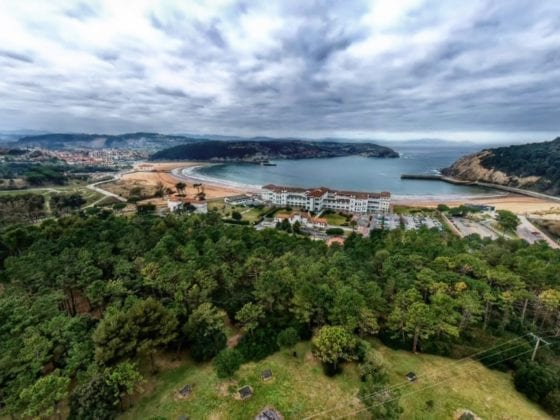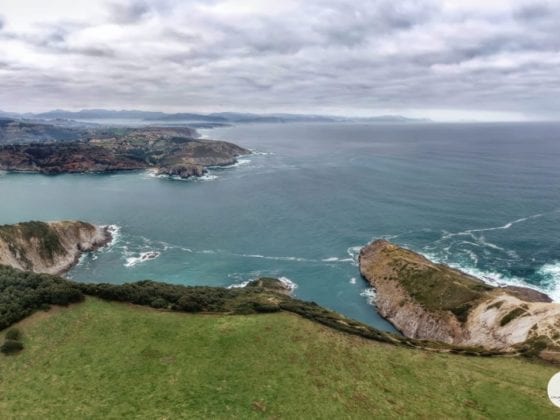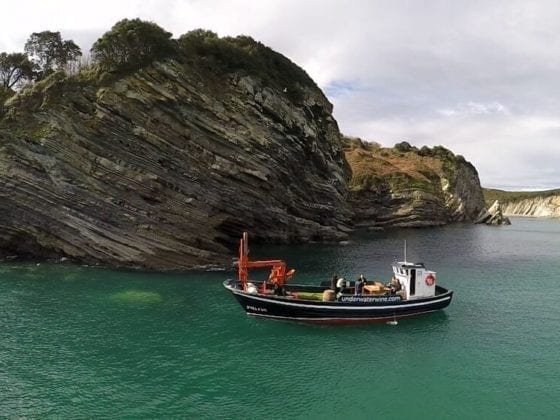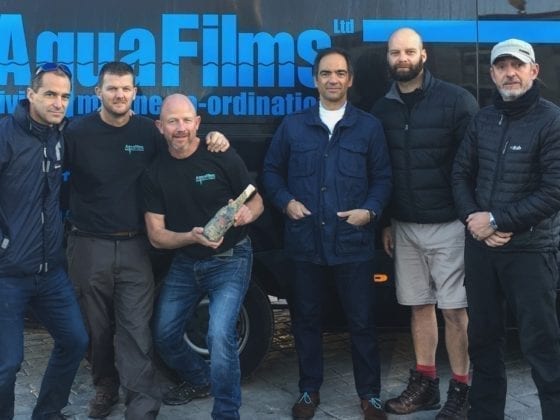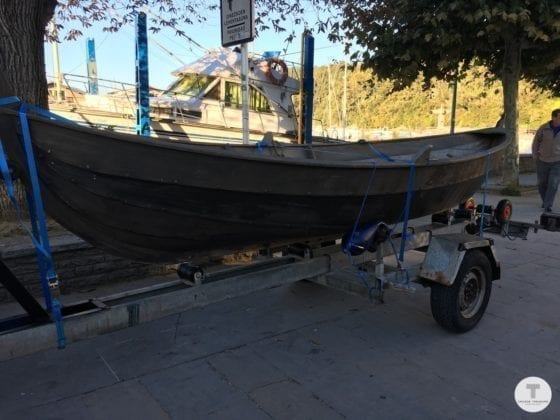Barrika’s geological treasure
Barrika’s geological treasure https://uk.underwaterwine.com/wp-content/uploads/2020/04/fullsizeoutput_59be.jpg 1280 960 Ane Martín https://secure.gravatar.com/avatar/a965295ec9fafad76d1aca3c1b3057b1We have walked around Barrika a thousand times and in our case, every time we go out to work in our boat, we have fallen in love with its wild beaches and its sea-viewed cliffs. We have enjoyed its green and blue colours, the breeze and its impressive landscape.
Such an extraordinary place must have a great history behind it and the coast of Barrika in the Bay of Plentzia has it. Among its natural architecture, we find miles and miles of rocky layers, showing at first sight its great beauty, yet giving us much more. We are talking about the flysch that has even attracted the attention of the producers of Game of Thrones and who recorded an episode of their famous series here (see photos in gallery with the recording team and the boat used in it).
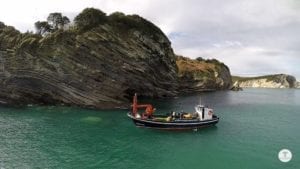
Every time we go out in our boat, to carry out maintenance tasks or during the visits we receive, we are fascinated by the charm of this place.
The flysch are sedimentary rock formations with certain characteristics in which layers of hard rocks alternate with layers of softer materials, and with time and erosion show us these enormous parallel lines of the rock that reveal the history of our planet. Within geology, flysch is considered one of the most important geological treasures in the world. And it’s no wonder, among all those rock layers we find information about the most important geological episodes that have happened on Earth.
Due to a great geological movement, the bottom of the sea emerged, and all the sediments that had been deposited there for thousands of years, in different layers, turned into this structure that we can see today. These lines, formed by sediments that have been accumulated on the bottom of the sea for thousands and thousands of years, constitute a great library of our natural history. Each substrate tells us things… the rainfalls, the quality of the air, who lived in this area, what activities took place in the area, what animals or plants existed at that time, among many other things.
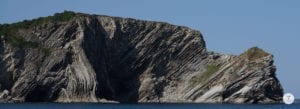
In particular, the Barrika flysch, and more precisely the Muriola beach, despite occupying a relatively small area in terms of extension, has much more striking layers compared to the rest of the flysch. These layers date back more than 140 million years. To give you an idea, its creation began when the current Basque Country was still completely covered by the sea.
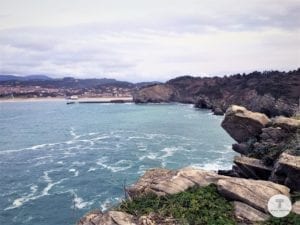 The geological substrate of the Barrika flysch belongs to the Upper Cretaceous, being one of the most important sources of flint supply in the Cantabrian coast due to the concentration of prehistoric occupations in this area. In it, tools such as points, raederas, knives, etc. were found and these date from the Middle Palaeolithic to the Bronze Age (c. 100,000 – 1,000 B.C.). Flint is a mineral of great hardness that was widely used in ancient times for the manufacture of tools and also for lighting fires. When this mineral collided with another object of equal or greater hardness, it generated sparks.
The geological substrate of the Barrika flysch belongs to the Upper Cretaceous, being one of the most important sources of flint supply in the Cantabrian coast due to the concentration of prehistoric occupations in this area. In it, tools such as points, raederas, knives, etc. were found and these date from the Middle Palaeolithic to the Bronze Age (c. 100,000 – 1,000 B.C.). Flint is a mineral of great hardness that was widely used in ancient times for the manufacture of tools and also for lighting fires. When this mineral collided with another object of equal or greater hardness, it generated sparks.
Close to Muriola beach is the open-air site of Aranbaltza, where in 2018 the oldest Neanderthal tools in the Iberian Peninsula were found. These tools are made of wood and are approximately 90,000 years old.
Now, in front of this beach, in this natural spot, we age our wines, joined to the sea and to the history on a unique spot.
Surely, the next time you walk through this great area alone or with us, you will see it with other eyes, with eyes that appreciate the years of history it contains and its great natural value.










